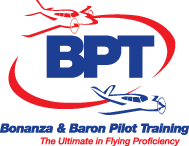Game On!
Make That Field Without Power
By Hank Canterbury
During training for simulated forced landings, either on or off an airport, I often see pilots overshoot the touchdown zone at a high rate of speed and rebound back into the air after forcing the plane to touchdown before it’s ready. Unfortunately, this also happens during real engine-out landings – and results are not pretty. Let’s look at some of the causes for this and what can be done to improve your technique so you won’t be one of the next rodeo participants.
You know your best glide speed, as listed in the POH. You also know how to modify your best glide speed for your current weight. For most models, at full gross weight it’s near 105 kts / 121 mph; for others, it is 110 kts / 126 mph. That speed provides the most distance per foot of altitude loss in a clean configuration with prop at lowest rpm.
Once into the final segment of the pattern / approach to an emergency landing area, most pilots deploy the gear and / or flaps to increase the descent path as well as slow down.
But what is best glide speed after drag is deployed? It’s not published anywhere, but it is less than what the POH says for a clean configuration. Without doing some flight testing to determine it more precisely, I’ve found it to be somewhere between 83 and 89 KIAS depending on your model and weight. As drag is increased, the curve for lift / drag versus airspeed moves up and left, which then yields a lower glide speed.
In the final phase, when you deploy any drag, I recommend slowing to 90 kts or 95 mph (which is easy to remember). You will get most of the benefits without concern about precision.
You want the extra drag to steepen your flight path, but you also need to reduce airspeed; otherwise, descent rate will be much higher than necessary in a mistaken attempt to hold the previous clean configuration glide speed. This can soon lead to even more problems, which I’ll explain below.
Slowing to the new, higher drag glide speed will not only keep the descent rate lower, but it will also provide a predictable flight path in the last phase of the approach. In addition, you’ll find it improves your judgement.
As you approach the ground and flare time, it’s important to honor another speed listed in Section Three of the POH called “Emergency Landing Approach.” This speed is between 80-83 kts / 92-96 mph, depending on the model. Why? Because you need enough energy (airspeed) to flare and arrest the descent of your high drag, no power aircraft before touchdown. The final descent path will likely be steeper than you are accustomed (12 to 14 degrees), and the POH minimum speed provides sufficient energy and elevator power to do that — once.
Now that you have successfully reached the point in your emergency glide to make the field, you will be confronted yet with another challenge: ground effect. Two things happen here that contribute to the tendency to spike the plane onto the surface. First, decreased induced drag translates into taking much longer to dissipate your higher entry airspeed (floating). Second, unless purposely resisted, the nose will pitch down as the elevator loses effectiveness due to less downwash angle on the tail of the plane.
You enter the zone faster than normal, most likely well beyond your intended touchdown zone (incorrect planning). Predictably anxious to get it down and relieved to be close to the ground, you rush things, based on the incorrect notion that getting the wheels on the ground and using brakes will save the day.
Spiking it on or hitting nose wheel first seldom works out very well, and may lead to a loss of control that could have been avoided. The result of both factors (extra speed and reduced drag) occurring at the same time, while under duress, coupled with anxiousness to land, all contribute to forcing it down prematurely. Better to make the best of a bad situation (long and floating) by patiently waiting to land at the correct attitude and speed rather than rebounding back into the air and losing control.
Correcting the first part (high speed overshoot) can be prevented with better planning during the approach, realizing what these situational factors will do to you. Choose an aim point farther from (short of) the landing zone to allow extra time (distance) to dissipate excess airspeed. It comes with practice!
The second part – correcting pitch down, that tends to hasten early touchdowns – has two components. As you are flying level a few feet above the surface and waiting for airspeed to dissipate, you must steadily raise the nose as speed decreases to compensate for decreasing lift. Additionally, just to achieve the same outcome, additional up elevator is necessary due to decreased elevator effectiveness in ground effect. Anticipate this so that you wait to get to the correct pitch attitude and airspeed before landing. Exercise patience!
Strive to make your emergency landing touchdown nearly the same as your everyday landings. The result will be a predictable rollout, usually less than1,500 feet, depending on the surface. If on a hard surface runway, achieving touchdown at the correct attitude and speed, even in the last 1000 ft or so, will be very survivable, even if you roll off the end at 20 kts.
Off airport, your rollout will be less, but the touchdown attitude / speed should be the same as you normally land. Without stalling, you simply can’t land any slower under control than your normal landings.
Remember the mantra—land under control at the slowest possible speed and do not stop suddenly! Done properly, that touchdown attitude and speed will be the same as your routine landings! You don’t have do something heroic outside of your normal technique.
Your judgement and techniques can be greatly improved by regularly striving for greater precision during all of your approaches and landings. Pick out a specific touchdown spot on centerline for every landing, then evaluate how close you are to it when using the correct pitch and speed. When faced with a forced landing, you’re more likely to get it right.
To help develop your technique, there is a task for the Commercial rating in the Aircrew Certification Standards (ACS) that calls for a 180-degree, power off approach from downwind to a spot landing in a 200-foot zone. Although it is not the same as an emergency profile discussed above, it is nevertheless a good approximation and provides a useful training profile to improve your judgment. “Train like you fly; fly like you train.”
Practice simulated forced landings so you develop the “sight picture” in the terminal approach phase. Be patient – and visualize the effects of factors mentioned above. When the time comes for an
engine-out landing onto that short, small landing area that you had to pick within range, it’s Game On and you must get it right the first time. Be ready for it.
Plan ahead, understand the challenges, practice, and make that landing zone.
Fly Often – Train Regularly – Practice More!
Hank Canterbury
ATP, CFII SEL & ME, MEI
FlyF33@aol.com




